Bulbs
Flower Basics
Flower Beds & Specialty Gardens
Flower Garden
Garden Furniture
Garden Gnomes
Garden Seeds
Garden Sheds
Garden Statues
Garden Tools & Supplies
Gardening Basics
Green & Organic
Groundcovers & Vines
Growing Annuals
Growing Basil
Growing Beans
Growing Berries
Growing Blueberries
Growing Cactus
Growing Corn
Growing Cotton
Growing Edibles
Growing Flowers
Growing Garlic
Growing Grapes
Growing Grass
Growing Herbs
Growing Jasmine
Growing Mint
Growing Mushrooms
Orchids
Growing Peanuts
Growing Perennials
Growing Plants
Growing Rosemary
Growing Roses
Growing Strawberries
Growing Sunflowers
Growing Thyme
Growing Tomatoes
Growing Tulips
Growing Vegetables
Herb Basics
Herb Garden
Indoor Growing
Landscaping Basics
Landscaping Patios
Landscaping Plants
Landscaping Shrubs
Landscaping Trees
Landscaping Walks & Pathways
Lawn Basics
Lawn Maintenance
Lawn Mowers
Lawn Ornaments
Lawn Planting
Lawn Tools
Outdoor Growing
Overall Landscape Planning
Pests, Weeds & Problems
Plant Basics
Rock Garden
Rose Garden
Shrubs
Soil
Specialty Gardens
Trees
Vegetable Garden
Yard Maintenance
Why Are the Leaves of My Orange Trees Curling?
Why Are the Leaves of My Orange Trees Curling?. Orange trees not only produce delicious citrus they also make striking landscape plants for the garden. Unfortunately, orange trees can become invested with pests or become infected with a fungal disease that causes their leaves to curl. It is essential to identify the problem with the trees in order...
Orange trees not only produce delicious citrus they also make striking landscape plants for the garden. Unfortunately, orange trees can become invested with pests or become infected with a fungal disease that causes their leaves to curl. It is essential to identify the problem with the trees in order to treat the leaves with either pesticide or herbicide.
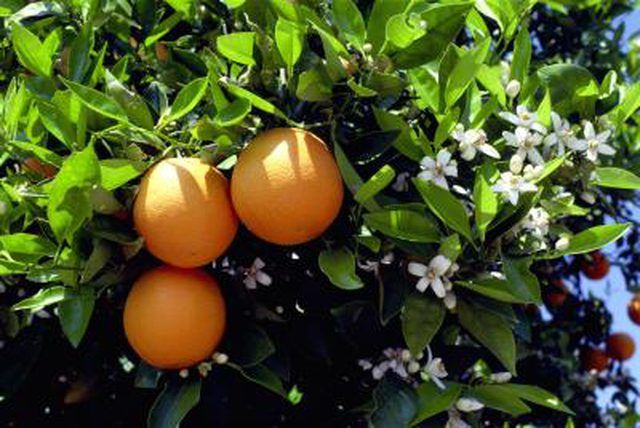
Examine the citrus tree's leaves for curling. Take note if the tree's leaves are starting to curl in the spring or summer months. Fungal diseases generally occur in the spring, while pests populations rise in the late summer months. Moist warm weather generally ushers in fungal disease season. Fungi spores can spend the winter in dormancy and come out when the wet conditions serve germination best. Hot weather is a favorite time for pests, which spend the winters in a state of dormancy and have produced young by summertime.
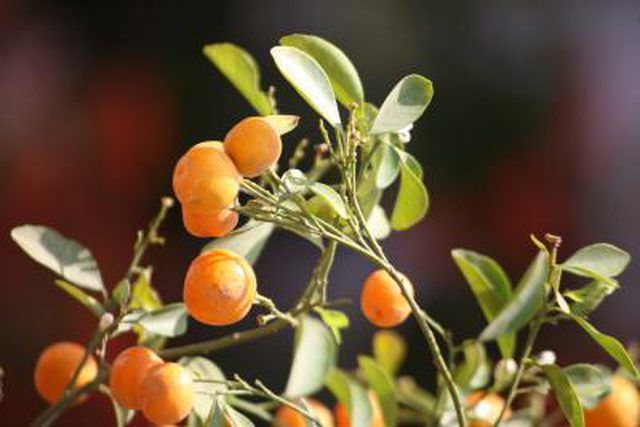
Citrus leaf miners are moths that live and lay eggs on the undersides of leaves. When these eggs hatch, the young larvae quickly eat away at leaves and create a serpentine pathway or mines. Leaves that experience this destruction begin to curl and become distorted. Orange trees beyond 4 years of age experience the brunt of most of the destruction from leaf miners, but they rarely die. According to the University of California, even heavy infestations do not result in death of the tree. However, they do leave the tree susceptible to citrus bacterial cankers.
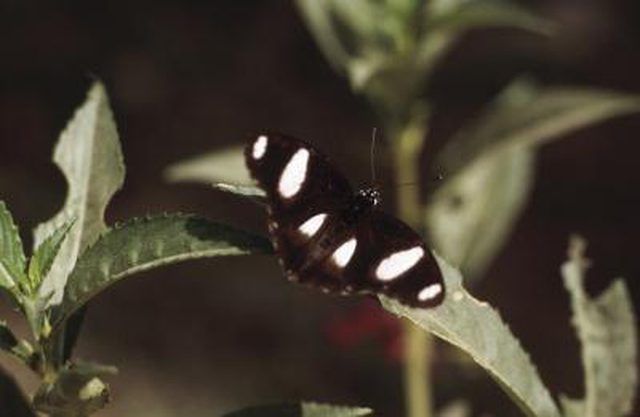
Citrus whiteflies are pests that lay eggs on orange trees. Much like the leaf miners, larvae suck up the leaves' nutrients. In addition, gardeners may notice sooty mold on the leaves. Sooty mold is a fungal disease created by the "honeydew" excreted by the flies. Ants may also be found near these curled leaves, drawn by the honeydew. Looking for honeydew, black sooty mold and ants can put gardeners one step closer to finding what is causing their orange tree leaves to curl.
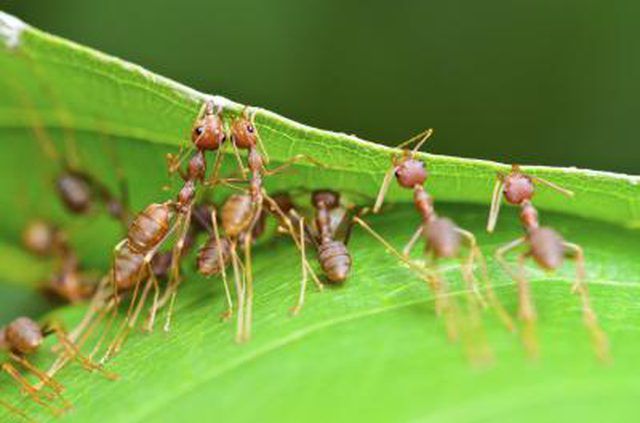
Citrus cankers are a fungal disease that cause discoloration and curling of orange tree leaves. Swelling on branches and twigs along with the curled leaves are good indications that the tree has a fungal disease. Treatment generally includes pruning off the cankers and applying a fungicide to the tree.
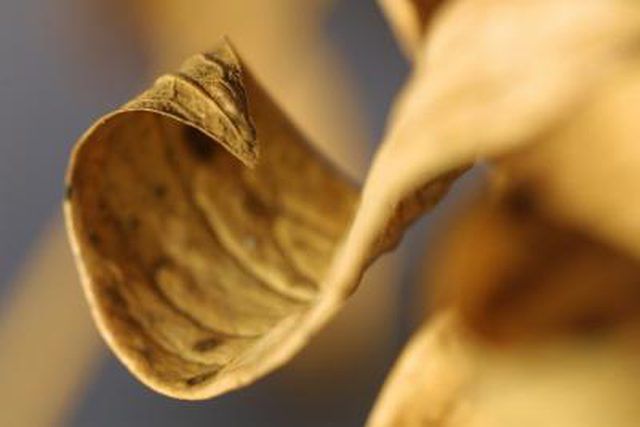
Improper cultural practices can cause orange leaves to curl. Over-watering is one cause for leaf curl. If the leaves of the orange tree are curling inward, gardeners must be careful to make sure that they are not over-watering the trees. Sprinklers that are spraying too much water can contribute to the problem. Stress from hot weather can also cause the leaves to curl. It is better for gardeners to water by hand until the leaves stop curling rather than by irrigation, so they know exactly how much water the tree is receiving. Giving the tree too much nitrogen fertilizer can attract pests such as aphids. As nitrogen encourages fast growth in the spring, aphids can become attracted to the tree. Following fertilizer label recommendations is best.
